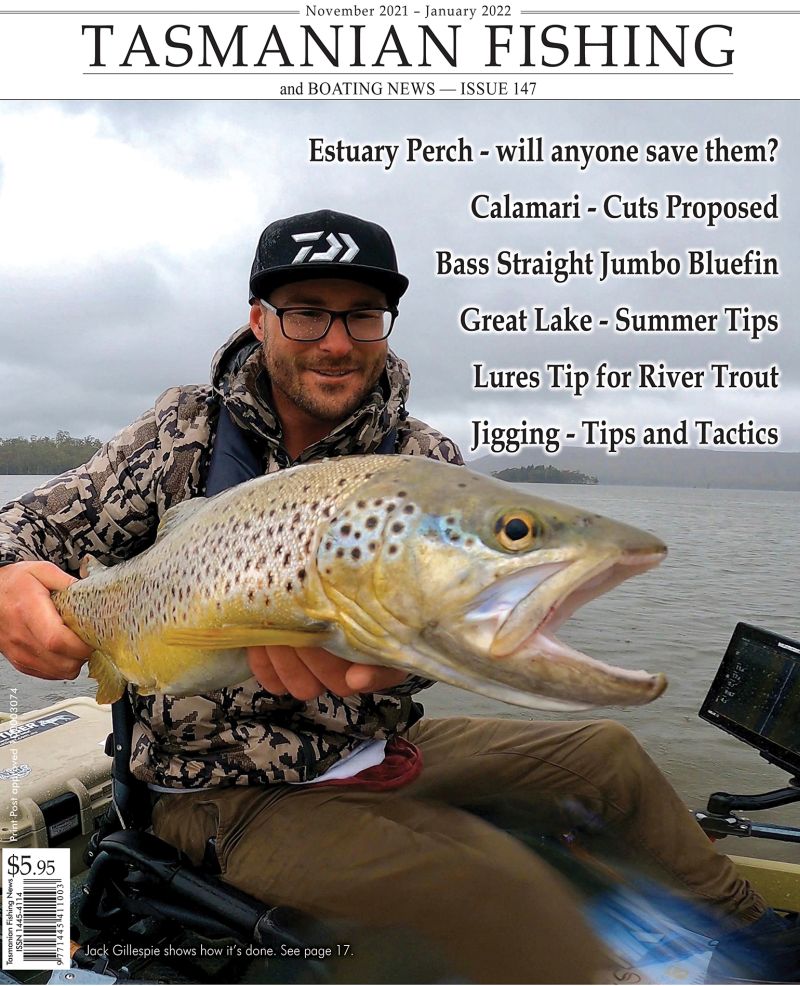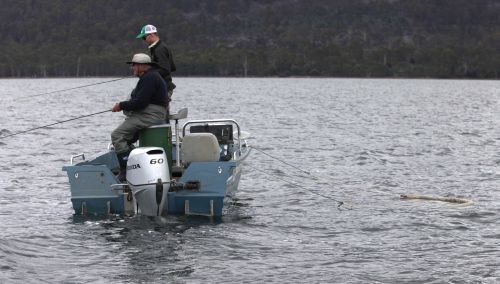From the Archives ...
Suggestions for Early Season Waters
Suggestions for Early Season Waters
by Sarah Graham
Many anglers are preparing for the opening of the new angling season on Saturday 7 August and it's shaping up to be another good one with the fishery in excellent health as a result of last year’s drought breaking rains. There are many great fishing locations around the State from which to choose for the opening weekend and early season fishing but here are a few suggestions.
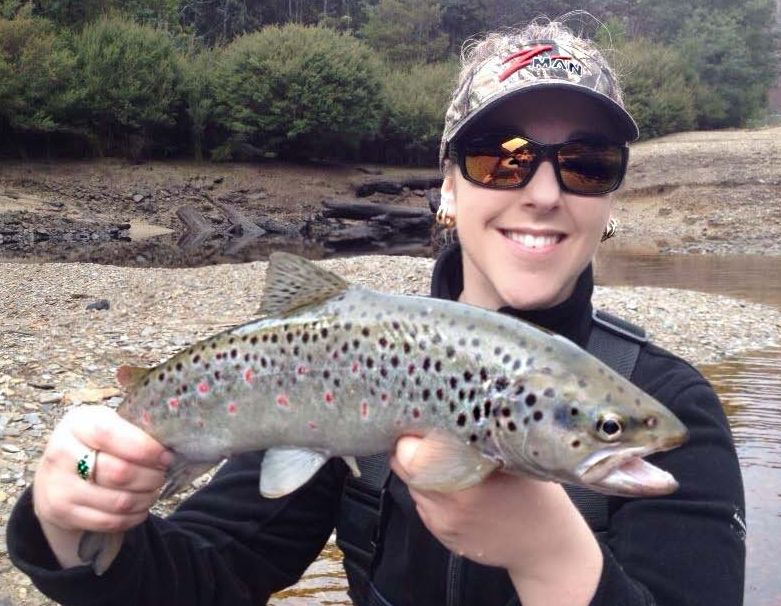 and an art worth your learning.."
and an art worth your learning.."
Presented from Issue 112, October 2014
So said Izaak Walton in the 1600s. It seems that Burnie’s Hannah Ledger has combined angling with art rather well. Hannah is a fish fanatic, outdoor enthusiast and budding, self-taught artist. From as young as she can remember, she has always had crayon in hand, colouring book under arm and as she’s grown as a painter, jars full of paintbrushes and cupboards full of ready-to-go blank canvas’.
A country girl at heart, Hannah was schooled at Yolla District High School, a small ‘farm’ school in the states North West, then went on to Hellyer College where she was given the opportunity to really grow her art skills; And by grow, that meant skipping the classes that would probably have more an impact of getting her somewhere in life, like English and Math to spend every spare minute with the art teacher, painting or drawing.
As typical teenagers do, they make poor decisions- and after being accepted in to one of the countries top art schools, turned down the offer and decided to move to the big island, where she lived for 5 years working in what seemed ‘dead end’ retail.
- Written by Stephen Smith - Rubicon Web and Technology Training
- Category: Trout Fishing
- Hits: 10220
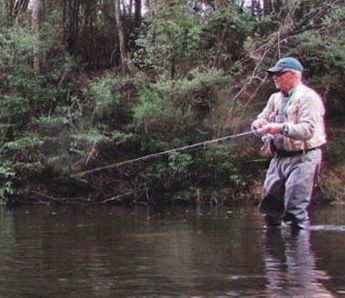 Presented from Issue 111, August 2014
Presented from Issue 111, August 2014
Well another season is upon us once more and early season fishing can run hot and cold for this time of the year. With the season start still being in Winter we are still going to have quite a bit of inclement weather to put up with for a month or two. Cold, windy and wet days at times making fishing conditions very hard and every fish well earned for those who tough it out.
Then there will be the very clear, cold frosty mornings when the temperature is so low that the water from the line freezes in the rod eyelets preventing one from retrieving the line back in after a few casts with the lure. For those of us who love trout fishing rivers, well that’s just something we take in our stride. Remember to be well rugged up, that’s the main thing, and really you don’t have to get up and be on the water at first light this early in the season either. Well I don’t any way, I start around 9.00 am and still get a good catch on most trips.
- Written by Stephen Smith - Rubicon Web and Technology Training
- Category: Trout Fishing
- Hits: 2780
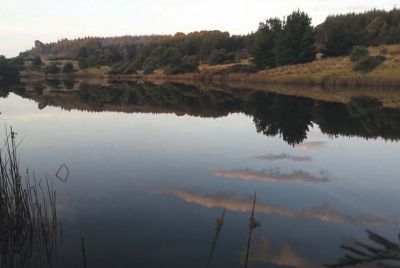 |
| The Guide Dam is a beautiful place |
Presented from Issue 111, August 2014
The Pet and Guide dams are both great waters on the North West Coast, often people over look these great waters. They yield good numbers of fish all year round but they fish exceptionally well for the first month to two months of the trout season.
To use the correct nomenclature they are reservoirs, but anglers refer to them as dams, so that is what I have done.
The Pet Dam is especially great for family fishing trips and the beginner angler. With access being suitable for the young, elderly and close flat areas are available for the physically impaired. It’s a large open area with plenty of room for the kids to run about with a great opportunity to land a rainbow trout or brown trout.
- Written by Stephen Smith - Rubicon Web and Technology Training
- Category: Trout Fishing
- Hits: 7918
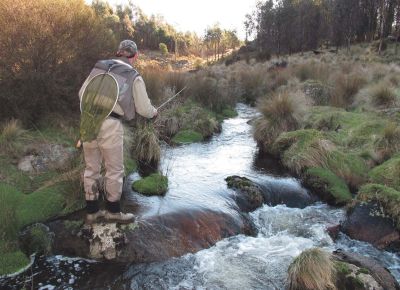 Presented from Issue 111, August 2014
Presented from Issue 111, August 2014
Tackling early season trout is a totally different proposition to fishing during the mild, calm conditions we had at the end of April. Fish have now spawned and are looking to put condition on, while the cooler weather of Spring is not conducive to insect hatches. Water temperatures are very low and levels are high. All of these things require different tactics. I will not discuss sea trout as they run and feed off a totally different set of circumstances. I will concentrate instead on inland lakes and rivers.
Trout seem to feed best in water temperatures of around 16 degrees, but you are not going to find much warm water in August and September. Having said that, I don’t believe that there is such a things as being ‘too cold to catch a fish’ as long as the water isn’t frozen over. Although water temperatures are far from ideal, a change of tactics will still bring results. Don’t expect enormous bags of fish but certainly enough to make it worthwhile.
- Written by Stephen Smith - Rubicon Web and Technology Training
- Category: Trout Fishing
- Hits: 2699
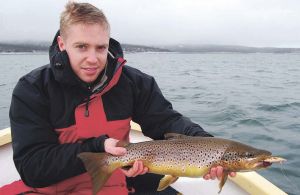 |
|
This fish and 6 more just |
Presented from Issue 111, August 2014
There has sometimes been a view that trout fishing is reserved only for the experienced angler, stories of hours spent trying to unravel the mysteries of the cunning trout by elderly gentlemen dressed in tweed is what often comes to people’s minds when they think of trout fishing. Regarded by many to be the premium, freshwater sports fish of the world, it is not surprising that the many anglers put the humble trout in the too hard box. Truth is, trout can be as easily caught as any fish, perhaps not always as accessible and your bread and butter saltwater species, but none the less, with a bit of perseverance with the correct equipment and technique, results can come more quickly than you think! In recent years, more emphasis has been put on making Tasmania’s famous trout fishery more accessible to newcomers to the sport. This has been achieved by increased stocking regimes into waters with lower fish numbers, improving access to waters and more information resources available such as the Inland Fisheries Service (IFS) website and IFS Smartphone App. Angler surveys have also given the managers of our fishery a better understanding on how they can improve certain aspects of the fishery. This year is the 150 th anniversary of trout fishing in Tasmania, and with a Ford Ranger up for grabs for buying a licence, what better time to give trout fishing a go? Here are a few tips to help you get started.
- Written by Stephen Smith - Rubicon Web and Technology Training
- Category: Trout Fishing
- Hits: 5438
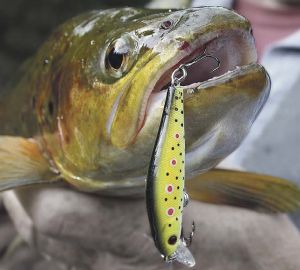 Presented from Issue 111, August 2014
Presented from Issue 111, August 2014
With the opening of the trout season on us it’s time to review the good old trout diary and look back at what has worked and where with the new season in mind. I know each season is different however most of us will be suffering the cabin type fever associated with our winter closure and itching to get back into it.
I have reviewed the past few years and narrowed down the best waters and techniques.
Although I live for the warm days of high summer when trout will rise freely to my rather scrappy homemade dries, the fly rod rarely leaves its tube in the first two months of the season so this article will concentrate on the lures, locations and methods that have served me well.
- Written by Stephen Smith - Rubicon Web and Technology Training
- Category: Trout Fishing
- Hits: 5292
Read more: Lure techniques for early trout season - Shane Flude
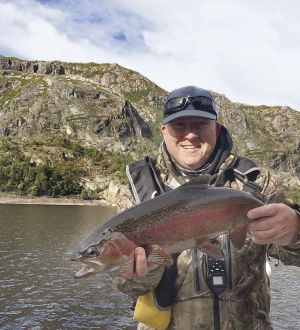 Presented from Issue 110, June 2014
Presented from Issue 110, June 2014
Winter fishing in Tasmania is a funny thing, and as we all know it’s been written about many times over about places to go and what to use. If we look back over the years we will find the fishing has changed greatly year by year because of different things like environmental factors, stocking rates, weather patterns etc. So it may be an apt time to look at Winter fishing again.
Tasmanian anglers from all walks can be a funny bunch and pull the pin on freshwater fishing once Easter passes or because of the closure of most waters, simply ignoring or forgetting about the waters which are open to them year round.
I find the fishing during winter albeit cold can be fantastic. Fishing from May to July can bring some fantastic blue sky days and if you rug up can be rewarded with hungry rainbows trying to fatten up before spawning or browns trying to put condition back on after they have contributed to their population growth. It’s just a matter of picking the right weather, which is something we probably do during the season anyway.
- Written by Stephen Smith - Rubicon Web and Technology Training
- Category: Trout Fishing
- Hits: 4580
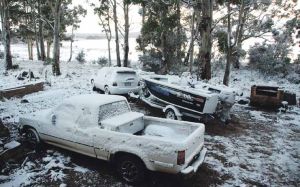 Presented from Issue 109, April 2014
Presented from Issue 109, April 2014
Post-Christmas has me focussed on the Derwent’s big black bream more often than not these days and given my proximity to the river its little wonder that is the case. In a busy time poor world the ease one can achieve a few hours at the drop of a hat it’s a quick release to clear the mind. But come April the true trout angler inside always sees me looking to the highlands for a couple of late season fixes on the trout.
- Written by Stephen Smith - Rubicon Web and Technology Training
- Category: Trout Fishing
- Hits: 5577
Read more: The end is near - Late season trout tactics - Justin Causby
Presented from Issue 109, April 2014
An excerpt from Origins of the Tasmanian Trout JEAN WALKER, Honorary Historian to the Southern Tasmanian Licensed Anglers’ Association produced an accurate and concise account of the fascinating story of the first introduction of trout to Tasmania in 1988.
Tasmania’s Inland Fisheries Service has just republished the booklet to celebrate the sesquicentenary (150 years) since the first tiny trout hatched in the Southern Hemisphere. Here are a few snippets from the booklet Origins of the Tasmanian Trout. Contact IFS on 6261 8050 to find a stockist.
TASMANIA’S early settlers were disappointed by the lack of freshwater angling. The only fish native to the inland waters were Australian grayling, small galaxias and in some rivers blackfish. None offered anglers a challenge in fighting qualities.
Bringing trout from England, 12,000 miles away, s seemed an impossible dream. That the dream, became a reality with perseverance, despite failures and setbacks, in 1864.
- Written by Stephen Smith - Rubicon Web and Technology Training
- Category: Trout Fishing
- Hits: 3658
Read more: Celebrate The Trout - 150 years in Tasmania - First born - 4 May 1864
Presented from Issue 109, April 2014
An excerpt from Origins of the Tasmanian Trout JEAN WALKER, Honorary Historian to the Southern Tasmanian Licensed Anglers’ Association produced an accurate and concise account of the fascinating story of the first introduction of trout to Tasmania in 1988.
Tasmania’s Inland Fisheries Service has just republished the booklet to celebrate the sesquicentenary (150 years) since the first tiny trout hatched in the Southern Hemisphere. Here are a few snippets from the booklet Origins of the Tasmanian Trout. Contact IFS on 6261 8050 to find a stockist.
TASMANIA’S early settlers were disappointed by the lack of freshwater angling. The only fish native to the inland waters were Australian grayling, small galaxias and in some rivers blackfish. None offered anglers a challenge in fighting qualities.
Bringing trout from England, 12,000 miles away, s seemed an impossible dream. That the dream, became a reality with perseverance, despite failures and setbacks, in 1864.
- Written by Stephen Smith - Rubicon Web and Technology Training
- Category: Trout Fishing
- Hits: 4510
Read more: Celebrate The Trout - 150 years of trout in Tasmania - First born - 4 May 1864
Current TFBN
Click above for current issue content. The current issue of TFBN is extensive and topical. In Tackle Stores, Newsagents and by subscription.
Delivered to your door for $48 for 2 years (8 issues). To subscribe, send Mike $48 via www.paypal.com.au . (Basic instructions are here) The email is at Contact Us. Your address will be included from PayPal.
Or phone Mike with your c/c handy on 0418129949
Please ensure your details are correct, for Mike to organise delivery.
TFBN Newsletter Sign up Form
Why not submit an article ?
When you have finished for the day, why not have a brag about the ones that didn't get away! Send Mike an article on your fishing (Click here for contact details), and we'll get it published here. Have fun fishing - tasfish.com
Category Descriptions
Here is a list of all of the Article Categories. The number in Brackets, eg (13) is the number of articles. Click on Derwent River and all articles relating to the Derwent will be displayed in the central area.
Articles by Category
-
Rivers (3)
-
Saltwater and Estuary Fishing (149)
-
Kayak Fishing (34)
-
Lakes (1)
-
Great Lake (62)
-
Lake Leake (52)
-
Woods Lake (16)
-
Lake Augusta (11)
-
Huntsman Lake (13)
-
Lake Pedder and Gordon (10)
-
Lake Dulverton (5)
-
Lake Crescent (6)
-
Tooms Lake (10)
-
Lake Mackintosh (2)
-
Lake Barrington (5)
-
Little Lake (8)
-
Meadowbank Lake (5)
-
Lake King William (7)
-
Lake St Clair (2)
-
Western Lakes (12)
-
Arthurs Lake (35)
-
Lake Echo (7)
-
Four Springs (54)
-
Lake Sorell (7)
-
Lake Burbury (6)
-
Other Lakes (57)
-
Brushy Lagoon (18)
-
Little Pine Lagoon (5)
-
Penstock Lagoon (16)
-
Brumbys Creek (7)
-
-
Events (48)
-
Estuary Fishing (0)
-
Coastal Catches (46)
-
Super Trawler (46)
-
IFS, DPIPWE, MAST and Peak Bodies (435)
-
Commercial Interests (98)
-
Other (24)
-
TFBN Back Issues (8)
-
Fly Fishing (67)
-
Trout Fishing (250)
-
Meteorology and Weather (8)
-
Jan’s Flies (50)
-
Tuna Fishing and other Game Fishing (86)
-
Cooking Fish (19)
-
Fishing Information (1)
-
Fishing Books (8)
-
Videos (5)
-
Tackle, Boats and other Equipment (146)
-
World Fly Fishing Championship 2019 (2)
Popular Tags
windyty.com
Visit https://www.windyty.com/
Rubicon Web and Technology Training
Hello everyone, I thought it would be a good time to introduce myself.
My name is Stephen Smith and I have been managing the website tasfish.com since May 2009.
It has been an epic journey of learning and discovery and I am indebted to Mike Stevens for his help, support and patience.
I am developing a new venture Rubicon Web and Technology Training ( www.rwtt.com.au ). The focus is two part, to develop websites for individuals and small business and to train people to effectively use technology in their everyday lives.
Please contact me via www.rwtt.com.au/contact-me/ for further information - Stephen Smith.
From the Archives ... (last chance)
Fishing on the Wild Side
Fishing on the Wild Side
Mike Fry doesn’t only live on the Wild Side of Tasmania, but also goes fishing in probably the wildest boat ever to troll for trout—certainly in Tasmania.
When your mate says ‘What are you doing tomorrow, want to come up the Gordon for the night?’ it would be pretty hard to say anything else except “you bet” and start checking out your tackle box and packing your overnight bag. But if your mate was Troy Grining and he wanted to give his new 52ft, high speed cruiser a run across Macquarie Harbour, test the new onboard dory with a chance of landing a nice Gordon River Brown you would have to feel privileged. I didn’t say anything about getting on my hands and knees and kissing his feet…just having a lend of ya’ but I did feel very appreciative.

